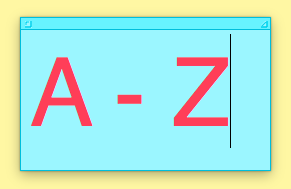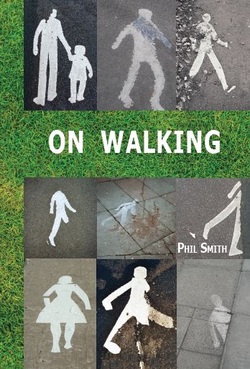
http://www.museumofwalking.org.uk/glossary/
A glossary of terms related to walking, compiled collectivelly by the Walking Artists Network community, and hosted by the Museum of Walking.

http://www.museumofwalking.org.uk/glossary/
A glossary of terms related to walking, compiled collectivelly by the Walking Artists Network community, and hosted by the Museum of Walking.
Posted in News and reviews | Leave a Comment »
The post brings two new books on walking, from the UK. On the cover, photographs of lush vegetation bring back pleasant memories from rural and urban walks across green-grassed, greyed-sky Britain.

The first book On Walking, opens with a long subtitle. The author – artist, writer, playwright, performer, academic, counter-tourist – owns up to “stalking Sebald” and defines the book as a guide to “going beyond, wandering around and looking at stuff”. The book certainly does all that. It is an honest and emotional account of Phil Smith´s passion for walking as a priviledged way of being in the world, being OF the world. You will find tips for walking, treasured memories, descriptions of places, poems, notes on the work of other walkers, clear renderings of theoretical concepts related to the practice of walking and prompts for creative walking and looking. The book is fully illustrated with coulour photographs, and like any good walk companion, doesn´t need to be read at one lenght or in any particular order. You may bring the book on a walk, and choose a chapter at random during a rest. Serendipity is always dear to books and walking.

The second book is titled Enchanted Things, signposts to a new nomadism: a compact photo-essay. The photographs take us on walking journey, focusing on sights, signs, ruins, debri, the kind of out-of-the-corner-of-the-eye details that walkers cherish. We do not know if the photos belong to one walk, or many, to one landscape or many. Sometimes we identify a landmark, most times we just recognise the kind of unimportant beauty of the found object or occassional sight. The prose that runs alongside the photographs do not describe or reference directly the images, but drifts in and out an inner journey through the author´s thoughts, occassionally cutting across the journey of the photographs, as two absorbed walkers that cross paths and momentarily acknowledge each other.
Both books are released on a Creative Commons Attribution-Non-Commercial-NoDerivs 3.0 Unported Licence, and can be purchased from Triarchy Press website, in print and as ebooks.
Posted in News and reviews | Leave a Comment »
Walk with the artist is a program of authors’ itineraries that combines the idea of tour, walk, open air workshop, and urban intervention. The first (past) two editions of the project involved the city of Berlin and 9 international artists. The Cultural Association 22:37 continues the curatorship of the Walks by turning them into an itinerant art project that will visit the cities of Bergamo (May 2014) in Italy, and Belgrade (2015).
Walk with the artist 2014 in Bergamo is the result of the cooperation of 22:37 with THE BLANK Bergamo contemporary art. The project will take place during ARTDATE, 4 days dedicated to contemporary art promoted by The Blank and this year dedicated to the subject Dialogo nel tempo (Dialogue in time) proposed by GAMeC, Gallery of Modern and Contemporary Art of Bergamo, for the future re-opening of the Accademia Carrara of Bergamo.
16/05/2014 Walk with Stefania Migliorati
17/05/2014 Walk with Silvia Giambrone
18/05/2014 Walk with Borders.de & Bernardo Giorgi
Posted in News and reviews | Leave a Comment »
From 9 to 11 May 2014 the Trinational Festival of Walking is taking place in and around Basel (Switzerland).
You find the programme in a short version in German on: www.raumforschung.ch
Posted in News and reviews | Leave a Comment »
Starting March 12 Wanderlust will be based at the InBetween Gallery, Elsensesteenweeg 211 in Elsene, Belgium
Feel free to stop in for a visit!
Open Wednesday through Sunday from 10 am to 6 pm
An artistic and collaborative project about mobility and public space in Elsene.
How do we move in urban space? What public space is (still) available? Do we see public space as a transit area in which we move from private space to another private space? Where do we find traces of green? Which spaces do we enjoy sharing with our neighbors?
Enrolment or more info via info@wanderlust-xl.be
Posted in News and reviews | Leave a Comment »
An amazing blog by Ruth Burgon, a PhD Candidate in History of Art at The University of Edinburgh researching the use of walking in modern and contemporary art practice. Each week she posts with exemplary discipline, a new art walk in different media performance, dance, film, sculpture…
Posted in Artists that walk, News and reviews, Walking Links | 1 Comment »

Submissions will be open until 14 March 2104
The Premier of New South Wales and the Mayor of Sydney, Australia are pleased to be hosting the XV International Conference on Walking and Liveable Communities in October 2014.
The conference will provide a platform to unpack the policies that are working to support people walking and to enable cities to be more walkable. Over the three days of shared debate, it is hoped that delegates will contribute to and learn from the successes of Sydney and other global cities, to benefit their own communities. Whether you are a passionate politician, a concerned campaigner or a progressive practitioner, you are warmly invited to share your experience and be part of the discussion at Walk21 Sydney in October 2014.
Key Themes for 2014 are:
Connecting places on foot – focussing on the economic benefits of walking
Walk alive – foucssing on healthy, active living
I walk! – focussing on new, innovative technologies
Paving the way – focussing on the built environment
Full details of the key themes and complimentary themes are available on the website: www.walk21sydney.com
Posted in News and reviews | Leave a Comment »
Send a statement text which with cover the title, and content of the work submitted, and general practice. This should include any relevant weblinks.
Posted in News and reviews | Leave a Comment »
I am thinking of it as a way to extend friendships and ways of being companionable while walking. I am imagining the numbers one, two and three to be on our minds as we wander.
Posted in Things to do | Leave a Comment »
The Art of Walking: Pedestrian Mobility in Literature, Philosophy, and the Arts from the Eighteenth to the Twenty-First Century. École Normale Supérieure de Lyon, France
9 -11 October 2013
October 9
Plenary session 1
Ian Marshall, Pennsylvania State University. Border Crossings: Walking the Haiku Path on the International Appalachian Trail.
Parallel workshop: Urban flâneurs?
Chair: Isabelle Baudino
Emmanuelle Peraldo, Saint-Etienne. Walking the Streets of London in the Eighteenth Century: a Performative Art?
Catherine Drott, Giessen. Maps from the Mind: Rambling London’s City Streets in the Eighteenth century.
Tatiana Pogossian, Paris 7. Walking in Space and Time:
the Quest for London
(Iain Sinclair, Peter Ackroyd and Gilbert & George.
Parallel workshop: Walking and the Politics of Memory
Chair: Marie Mianowski
Joe Duffy, Manchester. Performative Traces of Traumatic Place.
Christian Schmitt-Kilb, Rostock. “In the beginning was the land”: the Poetics of Nature and the Politics of Walking in Recent British Prose.
Bridget Sheridan, Toulouse. Walking, Photography, and Writing.
Parallel workshops: Urban flâneurs?
Chair: Emmanuelle Peraldo
Shao-Hua Wang, St. Hugh’s College, Oxford. A Way of One’s Own: the Writer Flâneur/se in Baudelaire and Woolf.
Bill Psarras, Goldsmiths. Towards a Twenty-First Century Urban Flâneur: “Botanizing”, “Weaving” and “Tuning” Actions and Senses Through Embodied Media Art Practices.
Parallel workshops: Poetic and philosophical wanderings
Chair: Klaus Benesch
Mark Riley, Roehampton. Navigating the Forest Path: Using Paul Celan’s Poem Todtnauberg as a Field Guide to Walking the Heidegger Rundweg at Todtnauberg.
Andrew S. Gross, Erlangen-Nürnberg. Pound, Peripatetic Verse, and the Postward Liberal Aesthetic.
October 10
Parallel workshops: Walking as Pathology?
Chair: Caroline Bertonèche
Ewan J. Jones, Cambridge. John ‘Walking’ Stewart, and the Ethics of Motion.
Amanda Klinger, Oklahoma. Nervous London: Pedestrianism and Urban Sensibility in Wordsworth’s Book 7 of The Prelude.
Catherine Welter, New Hampshire. A Juggernaut in the Streets of London: Walking as Destructive Force in R.L. Stevenson’s Strange Case of Dr. Jekyll and Mr. Hyde.
Parallel workshops: From the Grand Tour to postmodern drifting
Chair: Andrea Rummel
Nicolas Bourgès, Paris-Sorbonne. The Significance of Enoch’s Walking in Four Funeral Sermons (1703-1738).
Isabelle Baudino, ENS de Lyon. Textual and Iconographic Representations of Walking in Marianne Colston’s Narrative (1822).
Andrew Estes, Munich. Walking in a Changing America: A Visit from the Goon Squad.
Parallel workshops: Urban flâneurs?
Chair: Amélie Moisy
Virginia Ricard, Bordeaux. Walking in Wartime: Edith Wharton’s “Look of Paris.”
Mathieu Perrot, Paris Ouest. Poetics of the passer-by: strolling about the lines in Louis Aragon’s Le Paysan de Paris (1926) and Le Traité du style (1928).
Parallel workshops: From the Grand Tour to Postmodern Drifting
Chair: Mark Riley
Véronique Buyer, Paris 8. Women’s Walking in Four Movies by Michelangelo Antonioni.
Sophie Walon, ENS Ulm. Walking to Death in an Indifferent World in Gus Van Sant Cinema: Gerry, Elephant, and Last Days.
October 10
Plenary session
Tom Pughe, Orléans. How Poetry Comes to Him : An Excursion to Gary Snyder’s Wild Poetics.
Parallel workshops: Poetic and philosophical wanderings
Chair: François Specq
Catrin Gersdorf, Würzburg. Flânerie as Ecocritical Practice: Henry David Thoreau and Walter Benjamin.
Andrew Goodman, Monash. Walking with the World: Towards an Ecological Approach to Performative Art Practice.
Parallel Workshops: Walking as Pathology?
Chair: Ewan J. Jones
Caroline Bertonèche, Grenoble. “Walking Shadows”: Revisiting Some Old Romantic Haunts
Sarah Mombert, ENS de Lyon. Writing Dromomania in the Romantic Era: Nerval, Collins, Charlotte Brontë.
Françoise Dupeyron-Lafay, Paris Est. The Art of Walking and the Mindscapes of Trauma in Thomas De Quincey’s Autobiographical Works: the Pains of Wandering, the Pains of Remembering.
Parallel workshops: Urban flâneurs?
Chair: Gabrielle Finnane
Anna MacDonald, Monash. Remembering through the Senses: Walking and the Recovery of Memory in W. G. Sebald’s Peripatetic Narratives.
Karolina Katsika, Besançon. Walk, Feel and Hear: Walking as a Phenomenological Experience in Allerzielen by Cees Nooteboom.
October 11
Parallel Workshops: Poetic and philosophical wanderings
Chair: Thomas Pughe
Lacy Rumsey, ENS de Lyon. “Hike it and see”: Jonathan Williams, A.R. Ammons and the American “walk poem”.
Daniel Acke, Université libre de Bruxelles. The Poetry of William Cliff and the Meaning of Walking.
Parallel workshops: Urban flâneurs?
Chair: Françoise Dupeyron-Lafay
Guilaume Evrard, Edinburgh. Walking in, and out of, the Modern City,
or How Universal Exhibitions Created Flâneurs.
Estelle Murail, Paris 7/ King’s College London. “Du croisement de leurs innombrables rapports”: Baudelaire and De Quincey’s flâneurs.
Parallel workshops: Urban flâneurs?
Chair: Virginia Ricard
Amélie Moisy, Paris Est. Thomas Wolfe and the Urban Night Prowl: Walking, Modernism and Myth.
Andrew Patten, New South Wales. The Walking Medium: Between the City, the Text, and the Flâneur.
October 11
Parallel Workshops: Urban flâneurs
Chair: Andrew Estes
Andrea Rummel, Giessen, Germany. The City, the Self and the Real-and-Imagined: Flânerie in Virginia Woolf’s “Street Haunting.”
Manila Castoro, Kent, United Kingdom. Undermining the Myth: Why the Street Photographer is not a Flâneur.
Gabrielle Finnane, New South Wales, Australia. Walker in the Megacity.
Parallel workshops: Walking and the Politics of Memory
Chair: Catrin Gersdorf
Julien Nègre, Paris 7. Thoreau’s Alternative Perambulation: Walking as the Delineation of a Political Spatiality.
James Layton, Chester, United Kingdom. Communitas, Ritual, and Transformation in Robert Wilson’s “Walking.”
Marie Mianowski, Nantes. The Art of the ‘Good Step’ in Colm Tóibín’s Bad Blood : A Walk Along the Irish Border (1987).’
Posted in News and reviews | Leave a Comment »